With land prices up 31% from 2020 to 2023 and continuing to rise this year, farming organisations are concerned that this could be a longer-term trend that will put land beyond the reach of ordinary farmers and change the face of agriculture.
Wesley Payne and his two brothers run thriving farms in Cappaboggan, Co Meath.
Between them, they have 1,000 cattle and 1,500 sheep. They also grow oats, barley and fodder crops.
But at current prices, Mr Payne says buying land in the county is no longer viable.
"Like every business I'd like to expand. I want to buy more land, but it's gone to €15,000 to €20,000 an acre. I can’t compete at those prices."
Mr Payne says, even for relatively wealthy farmers like them, he and his brothers have been outbid by dairy farmers and business purchasers who buy to lease for solar and other purposes.
"I have a brother there who has a farm at the back here and he’s sandwiched in, others bought all the land around him. He just couldn't outbid them and couldn't buy the land."
Mr Payne and his brothers’ observations on the ferocious competition for agricultural land, particularly in the east and southeast, is reflected in the data on price rises.
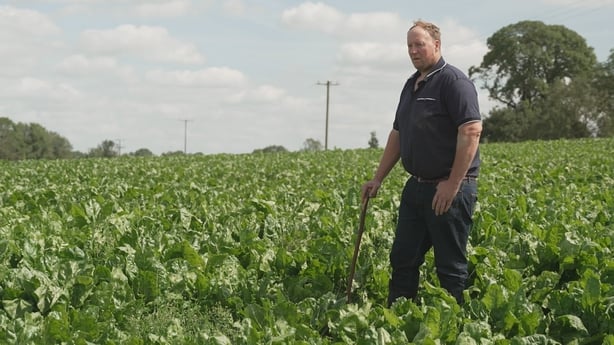
A comparison of the market prices listed by Society of Chartered Surveyors of Ireland (SCSI) and Teagasc in their Annual Agricultural Land Market Review over three years shows that the national average price per acre rose 31% between 2020 and 2023.
In Co Meath it rose 39% in that time, from €11,700 per acre in 2020 to €16,225 last year.
In other counties, price increases over three years were even steeper. In Tipperary, prices rose 47% to an average €17,539 per acre. In Waterford, prices rose a staggering 82% in three years to €20,000 an acre for good agricultural land.
Padraic Murtagh, of James L Murtagh Auctioneers in Mullingar, who sold over 25 parcels of farmland in the past three months, says land prices are continuing to rise sharply this year.
"We saw land recently in Meath for €18,000 an acre. If that land was for sale in 2023, It probably would have made €14,000 or €15,000 per acre," Mr Murtagh said.
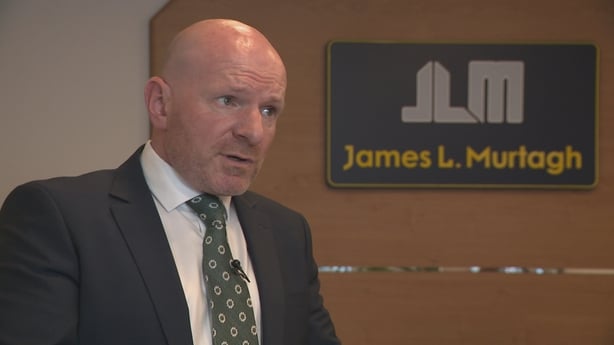
This leaves farmers like Mr Payne questioning his children’s future on the land. He’s seen a lot of children from farming families leave.
"They're going to the big cities - Galway, Limerick and Cork," and outside the country like Australia, "because there's no return on land anymore."
Who’s buying land?
Less than 1% of all farmland comes on the market annually according to Teagasc, which means demand is always high.
According to auctioneer Padraic Murtagh, it’s predominantly dairy farmers, business investors and part-time farmers who are buying up land.
"It’s dairy farmers because they're working on better margins than tillage or dry stock farmers. But you also see dairy farmers who are underbidders, unsuccessful at buying land against maybe business-people or part-time farmers, whose off-farm income is helping that part-time farmer buy that land."
Huge rises in global dairy commodity prices, due to supply chain disruptions during Covid, which peaked in 2022, created a significant income uplift for dairy farmers.
This and a change to what’s called the Nitrates Derogation - a reduction in the maximum level of use of fertilisers containing nitrates - has meant that dairy farmers who want to retain cattle numbers have bought more land.
Teagasc economist Kevin Hanrahan says that while the Nitrates Derogation changes has affected all farmers, dairy farmers can most afford to buy at the competitive prices.
"If they want to maintain their cow numbers, they have to go out there and get additional land in the land rental market or in the land sales market".
Gabriel Toolan, a Leitrim-based solicitor whose practice involves the conveyancing of farmland in the midlands, says what he witnesses is smaller farmers selling up.
"The response of the ordinary farmer is that they feel they're being squeezed out. This is a big pressure because farmers now have to consolidate farms. They're under pressure to have bigger farms, but in many cases they're not able to do that because the land isn't available to them," Mr Toolan said.
Mr Toolan says that in Co Leitrim, in particular, forestry companies are the real pressure on ordinary farmers.
"Co Leitrim has by far the highest percentage of forestry in the country, and this has been at the expense of small farmers being bought out," he says.
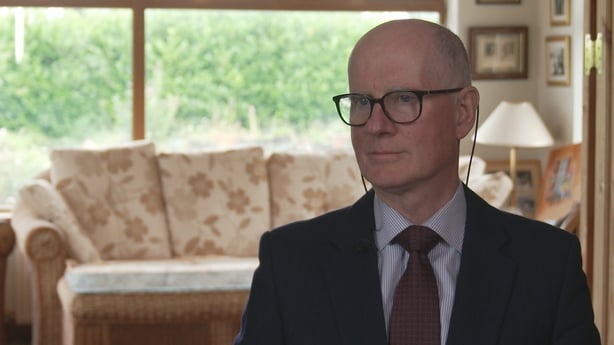
Inheritance tax
The other trend Mr Toolan has observed is the purchase of land by the super-wealthy.
"There are very advantageous provisions in existence now for high net-worth individuals to limit or in some cases, totally eradicate their tax liabilities. This is having the consequence that many persons who have substantial wealth are buying large land banks," Mr Toolan said.
A new tax relief on income coming from the long-term leasing of land was introduced in 2023.
But of concern to farming organisations like the Irish Farmers’ Association (IFA) and Irish Creamery Milk Suppliers Association (ICMSA) is the Agricultural Relief. This allows 90% of farmland of indefinite size to be gifted or inherited tax free.
It means that anyone who can turn their cash into farmland, can pass their wealth on to their next generation through land, with minimum tax.
According to Denis Drennan, President of the ICMSA, this issue is a significant problem for ordinary farmers.
"It's really been used for something that it wasn't originally intended to be used for," Mr Drennan said.
As a result, farmers are unfairly competing with non-farmers for good farmland.
"If you're competing with someone who's doing it for a tax reason rather than somebody who's buying the land for an agricultural purpose to continue expand their farm or make their farm viable, you just can't compete," Mr Drennan added.
Mr Drennan says inflated land prices are also affecting ordinary farmers who want to pass their farmland on to their children. Generally, the 10% taxable portion of inherited land fell within a tax-free threshold of €335,000, but with inflated prices, it is now less likely to do so.
"When you transfer to your son or your daughter, you have a tax-free threshold. And because this is driving up the price of land all over the country, you know, the threshold has been reached much easier because land has been inflated," Mr Drennan said.
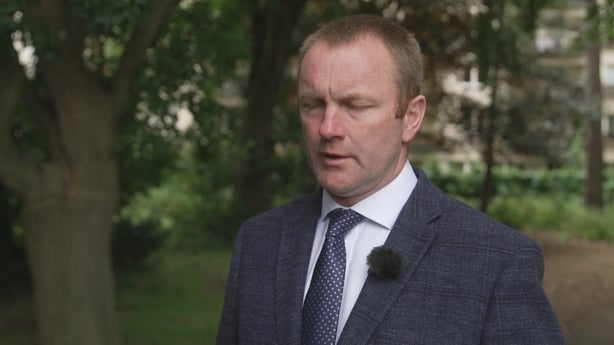
Cost of land rental
The impact of increased land values is affecting the rental market too.
Jimmy Cosgrave, a beef farmer in Newcastle, Co Meath, has farmed his own small herd on rented land alongside his father’s farm for decades, but it’s no longer affordable.
"My farm was existing on the basis of rented land. Eleven months land [short-term letting arrangement] for the last 22 years. And of late now I've been priced out of the market," Mr Cosgrave, who is also National Suckler Chair with the Irish Cattle and Sheep Farmers Association (ICSA), said.
"I can't afford to pay the going rate for land to farm my cows. With the result, I've had to go further and further afield," he added.
Mr Cosgrave is now paying another farmer to tend his cattle 30km away on a "B and B" arrangement.
But this current arrangement is not sustainable. It makes him ineligible for a vital environmental subsidy - the Suckler Carbon Efficiency Programme (SCEP) - which is tied to land, via the Basic Income Support for Sustainability Scheme (BISS).
"I can't join the SCEP scheme because I don't have the land to draw down the payment. I can't join that, that's our main grant or aid for suckler cow farming," Mr Cosgrave said.
His current short-term arrangement is also not practical because moving and mixing cattle with another herd devalues them and makes them disease prone. As a result, he urgently needs to rent nearby, but can’t.
"There isn't the amount of land out there. There is a lot of other parties getting into land, purchasing land.
"You have stud farms, you have businessmen, you have dairy farmers, the tillage sector. I don't know what's going to happen. It's a very frightening situation in farming at the moment."
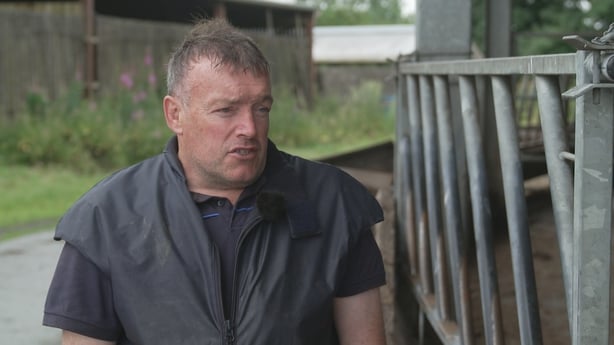
If current trends continue and less profitable farmers in sheep and beef like Jimmy leave, some believe that the profile of Irish farming will change, with only the wealthiest and largest farmers expanding.
"I think it's going to result in the sales of more and more farms to these bigger interests, which will result in greater concentrations of much larger enterprises," according to Mr Toolan.
Although official data is lacking, such a change is consistent with existing long-term gradual trends tracked by Teagasc.
"The largest increases in average farm size are on farms that we classify as dairy farms, but other types of farms are also increasing in size over the span of the last ten years or 20 years," Mr Toolan said.
Farming organisations like the IFA and the ICMSA have focused on non-farmer competition in the market and want to restrict the use of agricultural tax relief by investors.
ICMSA President Denis Drennan says the solution is to make sure that this tax law is used for the purpose that was set out.
"If we tighten it up so that the legitimate family farm qualifies for agricultural relief, or the legitimate business qualifies for business relief, that would solve the issue overnight."
In its pre-budget submission, the IFA proposes that agricultural relief is only open to those actively farming for 15 years.
But others say the rental market itself is just as likely to correct itself based on farm incomes.
"Recent dramatic reductions in the income that dairy farmers have earned will, I expect, take some of the heat out of that agriculture land rental markets. But in some places where there's a shortage of land in the market, we may still see ongoing increases in land rental prices," according to Teagasc’s Kevin Hanrahan.
But Mr Cosgrave still fears the worst.
"If the land price stays as buoyant as it is at the moment, I won't be able to rent land full stop.
"The only other option I'll have will be to cut my numbers, sell my herd and start carrying what this [his father’s] farm can carry. That'll be it."







